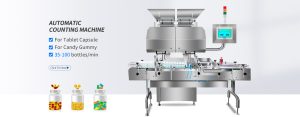Tablet Press Machines Explained
A tablet press refers to a mechanical device that compresses powders into a single tablet of a uniform size or weight. Tablet dies are an essential need for pharmaceutical, nutraceutical and a number of other manufacturing industries to produce a large number of reliable and quality tablets in no time. They can fuse intricate engineering with rugged machines to get high performing results.
Some of the most important elements, and what they do
Hopper: In the hopper is where the powdered material is introduced to the machine. Usually ranging in capacity from 10 to 30 liters, depending on the size of the machine and its daily throughput.
Dies & Punches—Used to shape the tablets, the die sets the size and shape, while the punches apply force. Machines are made to carry out multiple sets to handle different shaped tablets at a go.
Compression Rollers: These compress the powder within the dies pushing it together to ensure that the tablets are solid and will not crumble from 2-100 kilonewtons (kg).
Feed system: The duty of this system is to supply the dies evenly by controlling the powder flow with acts such as the rotation or vibration so that a balance and identical weight and composition of tablet is tabled.
How do I operate a Tablet and Press machine?
This is a unique process for a tablet press machine:
Feed: The powder is moved from the hopper to the feeder and then to the dies to fill them.
Compression: High pressure makes the two punches finally meet – powder compresses
Ejection : Once the tablet compression complete, the lower punches move upwards to push out the tablet from the die for further process.

Kinds of tablet press machines
The major differences between the scale of operation for various types of tablet press machines include-
Single punch tablet press -Ideal for smaller outputs, and one set of dies and punches are used; these are typically used in R&D and pilot projects.
Rotary tablet presses — Rotary tablet presses are intricate machines that use sets of rotating dies and punches to create thousands of tablets per hour, making them ideal for mass production.
Efficiency and Advancements
Yet today, machines are generally so automated that they include sensors and control systems that adjust weight, thickness and hardness parameters in real time to maintain desired quality. Such technological upgrades improve productivity, reduce waste and improve operations.
Looking Ahead
In this article, we will be going over how a tablet press machine works as they are a critical piece of industrial equipment. As technology continues to advance, the future of these machines and their improved efficiency and adaptability will be a valuable tool in the ongoing evolution of tablet manufacturing for a multitude of applications. In turn, their evolution will continue to contribute to a more efficient way of meeting production demands and quality assurances in the years ahead.
